
- ANGAFAMA
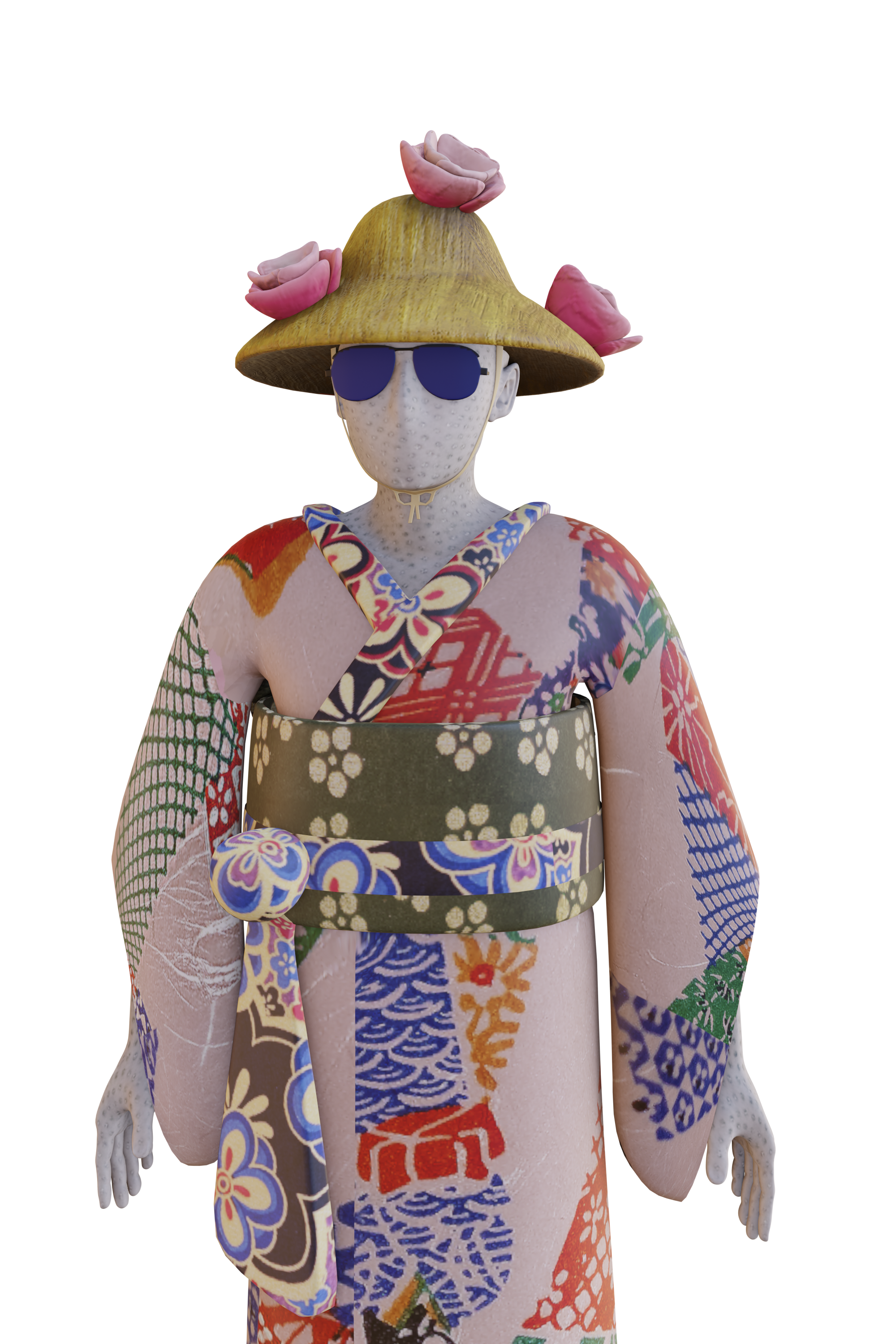
Appearing in: Self-Portrait.
Angafama is a Faamaa, a character appearing in the Angama (アンガマ) procession during the Bon Festival in the Yaeyama islands, in Japan. Faamaas represent the grandchildren of an old couple temporarily returning from the world of the deceased during the Bon Festival, a Japanese Buddhist custom to honor ancestor’s spirits.
Angafama is a character inhabiting Self-Portrait’s digital world. Self-Portrait is an installation centered on the entanglements between autobiographical, digital and collective memories as well as with data economies, and transhumanist efforts of memory preservation. More information on this art piece here.
Self-Portrait contains a digital world in which the residents and passers by’s wealth depends on the amount of attention paid to the memories they hold.
- CHERRIBYM

Appearing in: Self-Portrait.
Cherribym is character whose appearance and name are references to cherubim as they appear in some key texts of Abrahamic religions. The functions of these angels are among others, to protect the Garden of Eden, which hosts the Tree of life that grants eternal life.
Cherribym is an inhabitant of Self-Portrait’s digital world. Self-Portrait is an installation centered on memories which contains a digital world in which the residents and passers by’s wealth depends of the amount of attention paid to the memories they hold.
More broadly, Self-Portrait is also referring to transhumanist efforts of memory preservation through methods such as cryogenisation or mind uploading, in an attempt to avoid death. Self-Portrait highlights common patterns between the way transhumanists -who are dominant atheists- conceive eternal life through memory preservation and the way Christian, Buddhist religions or Chinese and Greek mythologies connect death, afterlife, rebirth or eternal life and memory.
More information on this work here.
Cherribym is the guardian of eternal life and an ally of transhumanists who seek to get rid of death. In Greek mythology, cherry trees contain the elixir of immortality, while in Chinese mythology, cherry blossoms have the power to grant immortality to a magical Phoenix, hence the cherries on Cherribym’s head.
- COPI & MONI

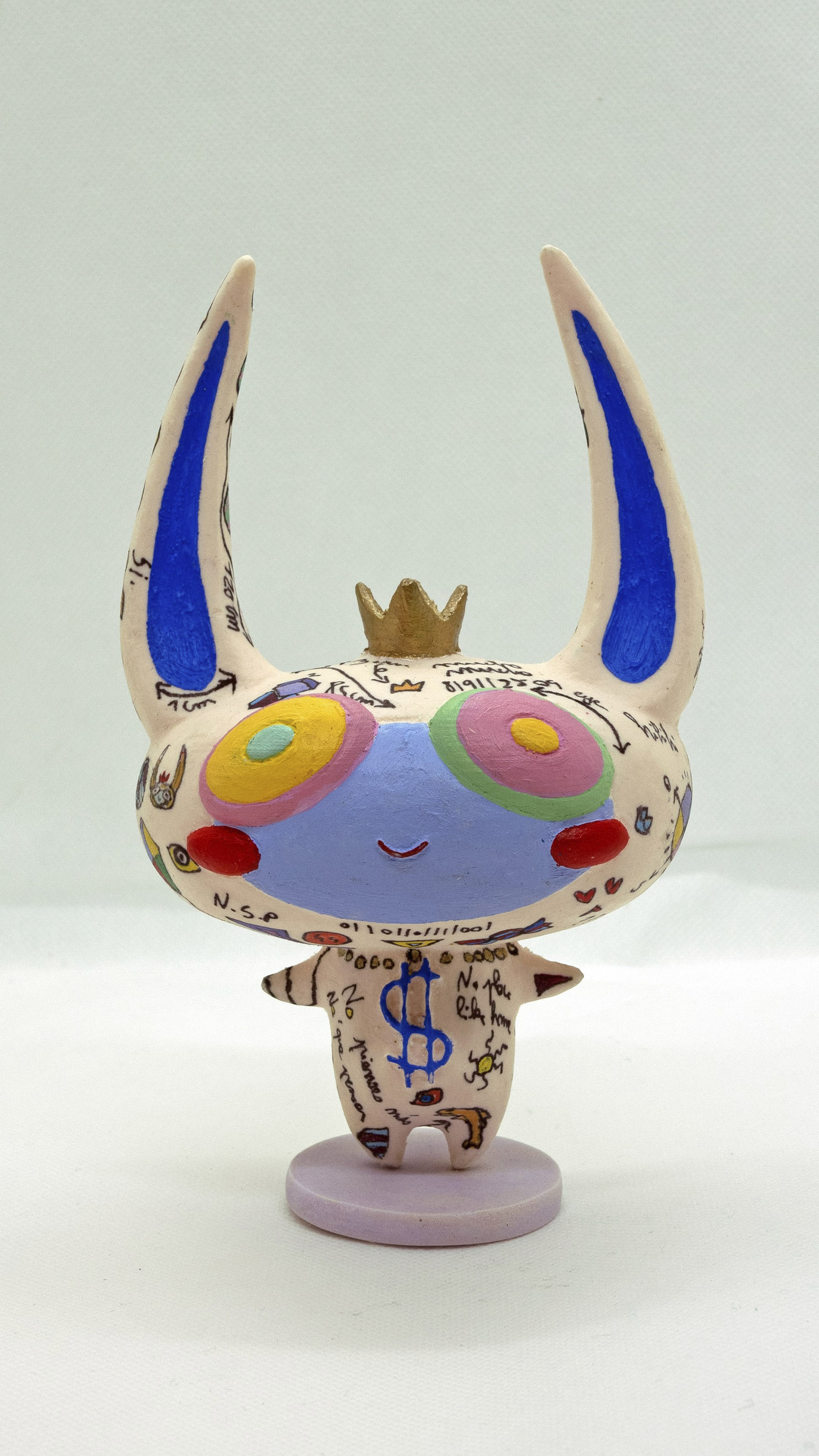
Appearing in: Truth Dealer, Mini-Monies, Terracotta Blockchain.
Moni is the mascot of “Truth Dealer”. This tiny bunny-like creature is the twin of another character named Copi.
Copi & Moni are interpretations of interpretations; they both refer to art characters widely declined in different forms of art merchandise such as Kaikai and Kiki from Takashi Murakami or Companion from Kaws.
Copi and Moni are the product of a playful exercise of extending the idea from which the above-mentioned characters emerged: Mickey Mouse from Walt Disney and other cartoon characters inspired Kaws and Murakami to explore merchandization in the sphere of fine art. If these are witnesses and products of the effect of globalization and neoliberalism on art, what would they look like if they had been invented now, in an age of post-globalization marked by nationalist retrenchments and populism, an age inaugurated by the Brexit referendum and the election of Donald Trump? Will our world get divided into competing empires again, as the project “Terracotta Blockchain” refers to, or will our global system take another shape? At a macro level, how will the common imaginary of the post-globalization era impact the shapes and characteristics of our future icons? And inversely, how will these icons impact our “reality”?
Since at a micro level, the individual withdrawal that marks post-globalism manifests itself into micro-celebrity culture that promotes the idea of fast and self-made success, Moni was designed to represent the glorification of hyper productivity that is presented as the backbone of this success, and the supposedly easy and abundant financial rewards that result from it.
- DONALDINO

Appearing in: Self-Portrait.
Donaldino is originally a Christmas tree ornament found in a generic Danish commercial venue. It is strongly connected to my first memories of my move to Denmark in 2021.
Donaldino is an inhabitant of Self-Portrait’s digital world. Self-Portrait is an installation centered on memories which contains a digital world in which the residents and passers by’s wealth depends of the amount of attention paid to the memories they hold.
More information on this work here.
Donaldino got imported to Self-Portait’s world thanks to 3D scanning technology. He is thus a symbol of the digitalization of memories and the economic exploitation of such data.
- FUNES
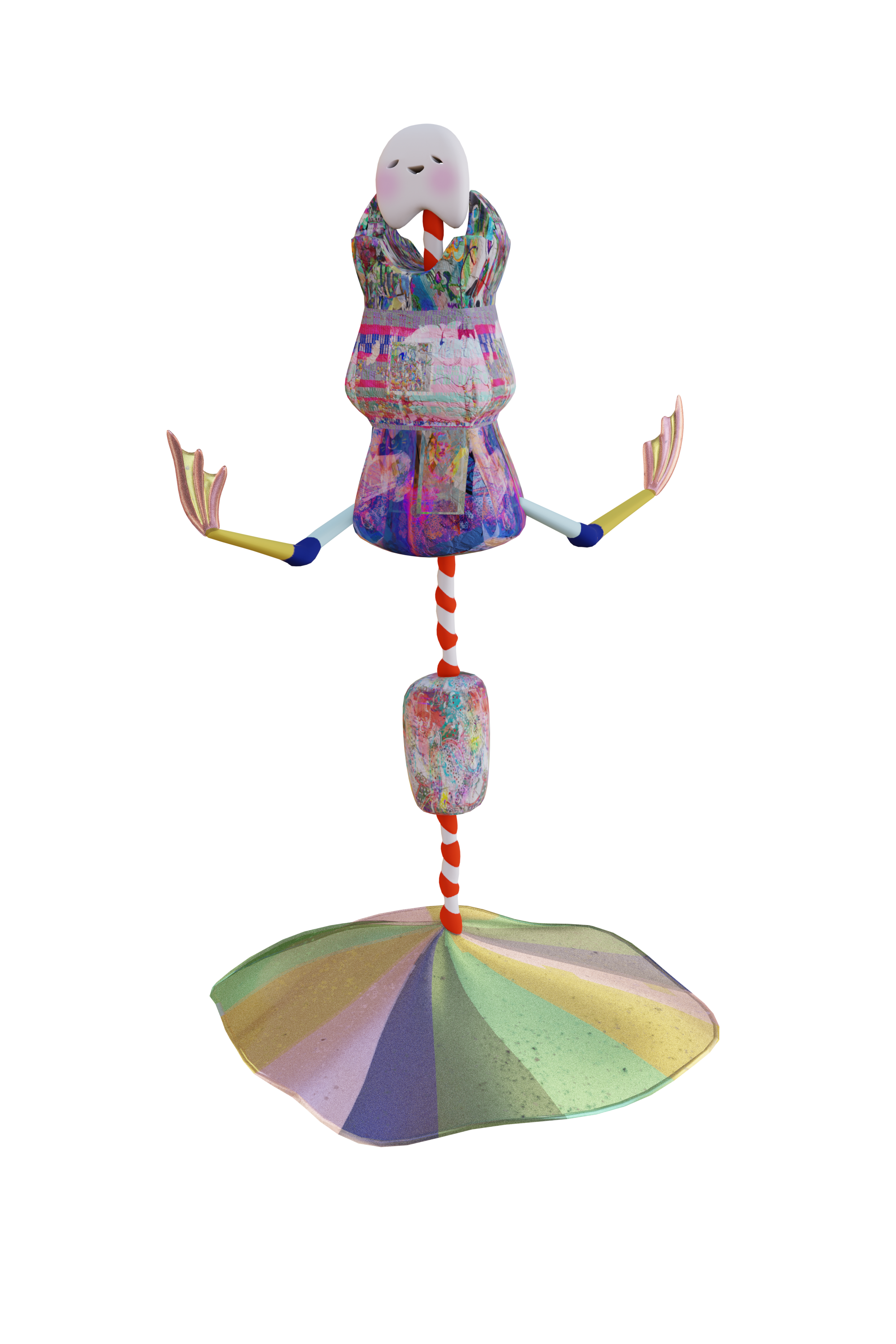

Appearing in: Self-Portrait.
Funes is a character composed of a pile of memorial traces that almost paralyze him. He is a reference to Funes el memorioso, a short story from Jorge Luis Borges published in 1942, centered on Ireneo Funes, who loses the capability of forgetting after an accident. In the story, hypermnesia prevents him of thinking.
In the context of Kiral World, Funes is an inhabitant of Self-Portrait’s digital world. Self-Portrait is an installation centered on memories which contains a digital world in which the residents and passers by’s wealth depends on the amount of attention paid to the memories they hold.
More information on this work here.
- MÉLIMELO

Appearing in: Self-Portrait.
Mélimélo is a character made of three components: a human face, a machine-like face made of pachinko´s (a gambling mechanical machine) pieces, and a face referring to natural elements such as the moon and the sun.
Mélimélo is an inhabitant of Self-Portrait’s digital world. Self-Portrait is an installation centered on memories which contains a digital world in which the residents and passers by’s wealth depends on the amount of attention paid to the memories they hold.
More broadly, Self-Portrait is also referring to transhumanist efforts of memory preservation through methods such as cryogenisation or mind uploading, in an attempt to avoid death.
More information on this work here.
Mélimélo is a symbol of transhumanist ambitions, aiming at improving the human condition through bioengineering or environmental engineering technology, among others, as represented by his constituent components.
- N
Appearing in: Reflection.
N is a character appearing in Reflection, a manuscript based on transmedia storytelling and which is a tribute to a series of artists and artworks, viewed through the lens of the work of Niki de Saint Phalle and her Tarot Garden. Therefore each character exists in several versions: a person or a real artwork to which he or she refers to, a Tarot card, as well as a character existing in 44 (6) and 44 (9), two worlds present in the manuscript.
More information on this art piece here.
Name in 44 (6): N.
Correspondence in 44 (9): the injector.
Correspondence in our reality: Niki de Saint Phalle. As she is at the origin of the Tarot garden and each character corresponds to a card, she is in fact the one who orchestrates the book. Hence the receptionist's response to the main character when he asks her where N is: "You may not see her, but she's there, behind every wall, every mind." Another clue is that when the main character first enters the hotel, he sees wire silhouettes, like prototype sculptures. Niki de Saint Phalle's sculptures were made of wire, covered with canvas coated with glue and then painted. These silhouettes are therefore in fact the prototypes of the characters in the manuscript.
Correspondence in the Tarot: the Magician, which symbolizes learning. This was the card with which Niki de Saint Phalle identified with the most.
- R
Appearing in: Reflection.
R is a character appearing in Reflection, a manuscript based on transmedia storytelling and which is a tribute to a series of artists and artworks, viewed through the lens of the work of Niki de Saint Phalle and her Tarot Garden. Therefore each character exists in several versions: a person or a real artwork to which he or she refers to, a Tarot card, as well as a character existing in 44 (6) and 44 (9), two worlds present in the manuscript.
More information on this art piece here.
Name in 44 (6): N.
Correspondence in 44 (9): the guide.
Correspondence in our reality: Arthur Rimbaud. Hence the excessive personality of the character, his genius, his use of drugs. It is in fact a reinterpretation of Rimbaud: in “Reflection”, he is not a poet, but a music composer. Here are some clues that allow to identify the character:
-R says "The one you describe is not the one I think I am". This is a reference to the famous sentence "I is another" by Rimbaud
-When R is swimming, he exclaims that he will add to his composition "The Drunken Boat", in reference to one of Rimbaud's most famous poems, "The Drunken Boat".
-R is obsessed by the sea. Rimbaud was obsessed with traveling, the “elsewhere” to which one had access at the time by the sea.
-The guide, the counterpart of R, says this: "I was a poet, a language teacher, a soldier and a deserter, I worked in a circus, I was a farmer, I managed a building site, I was also a trader, a manager, a coffee buyer, now a trafficker and look, I will be a geographer...". These are the occupations exercised by Rimbaud.
Correspondence in the Tarot: the Tower, which represents the illumination ("Les Illuminations" is the title of a collection of Rimbaud), but also the ego destroyed by the ordeal. Rimbaud's ambitions as a poet were suddenly interrupted and that he ended up becoming an arms dealer, without ever explaining this conversion.
- THE APPRENTICE COOK
Appearing in: Reflection.
The Apprentice Cook is a character appearing in Reflection, a manuscript based on transmedia storytelling and which is a tribute to a series of artists and artworks, viewed through the lens of the work of Niki de Saint Phalle and her Tarot Garden. Therefore each character exists in several versions: a person or a real artwork to which he or she refers to, a Tarot card, as well as a character existing in 44 (6) and 44 (9), two worlds present in the manuscript.
More information on this art piece here.
Name in 44 (6): The Apprentice Cook.
Correspondence at 44 (9): the great chef who invented the pineapple with pepper and chili sauce, referred to by the girl who organizes the dinner in the restaurant.
Correspondence in our reality: the policeman numbered "223", in Chungking Express, an iconic film by director Wong Kar-Wai. In this film, 223's girlfriend May broke up with him on April 1, April Fool's Day. Not knowing if this is a joke or not, the policeman creates a rule: every day, until May 1st, he buys a can of pineapple, May's favorite fruit. These cans must expire on May 1. He figures that if she doesn't tell him that their breakup is a joke by May 1, his relationship will have expired by then. So this is a way for him to process his breakup.
The apprentice's obsession with canned pineapples is a direct reference to 223.
Correspondence in the Tarot: the Pope (reversed card). It is the meaning of the card when it is drawn upside down that interests us here. Indeed, when this card is drawn upside down, it represents excessive credibility, exaggerated friendliness, non-conformism. These are the personality traits of the apprentice cook.
- THE CHILD WHO SPEAKS ENGLISH
Appearing in: Reflection.
The Child who speaks in English is a character appearing in Reflection, a manuscript based on transmedia storytelling and which is a tribute to a series of artists and artworks, viewed through the lens of the work of Niki de Saint Phalle and her Tarot Garden. Therefore each character exists in several versions: a person or a real artwork to which he or she refers to, a Tarot card, as well as a character existing in 44 (6) and 44 (9), two worlds present in the manuscript.
More information on this art piece here.
Name in 44 (6): The Child who speaks in English.
Correspondence in 44 (9): the puppy that the main character sees: "Nonchalantly I followed with my eyes a puppy that trotted cheerfully before me. He was touching with his long body and short legs, his drooping eyes. His green collar contrasted with the red of his muzzle and the white of his fur. I watched him swiftly walk away, kicking up little piles of dust with each stride."
This is a reference to Yoshitomo Nara's "puppy”.
Correspondence in our reality: the drawings of artist Yoshitomo Nara. The latter has the habit of representing sulky children in drawings or paintings. Most of the time they are accompanied by sentences in English (not necessarily grammatically correct) and symbolize a feeling of revolt. Each of the sentences uttered by the little girl in "Reflection" is from a work of Nara. That is why they are not always grammatically correct, and why they are written in English in the original version of the manuscript, which is in French. Another key character in Nara's work is "puppy", a short-legged flat dog with a red nose and a green collar. He sometimes accompanies the girls. Unlike the latter, he is mainly represented as calm and friendly. This is why the reflection of the little girl in 44(9) is the puppy.
Correspondence in the Tarot: Temperance, but reversed. When this card is drawn upside down, it symbolizes imbalance and excess. In the early drawings of Nara, his little girls are most of the time represented enraged, revolted against society.
- THE DREAM-EATING TURTLES
Appearing in: Reflection, Self-Portrait.
The Dream-Eating Turtles is a type of creature appearing in Reflection, a manuscript based on transmedia storytelling and which is a tribute to a series of artists and artworks, viewed through the lens of the work of Niki de Saint Phalle and her Tarot Garden. Therefore each character exists in several versions: a person or a real artwork to which he or she refers to, a Tarot card, as well as a character existing in 44 (6) and 44 (9), two worlds present in the manuscript.
More information on this work here.
The Dream-Eating Turtles are roughly 40cm long and have transparent shells. This rare and sacred specie nourishes itself with dreams. They swim from the 44(6) ocean to the 44(9) ocean once a year via a river going trough the pagoda in 44(6), in their quest for fresh dreams they catch either via direct human contact or in the ocean, where particles of lost, abandoned and unrealized dreams of the ones who are gone end up. Dream-Eating Turtles are poached in 44(9) by mafia gangs and anyone desperate for quick money to extract their dreams then sold as experiences on the black market of the green quarter of 44(9).
- THE EMPEROR

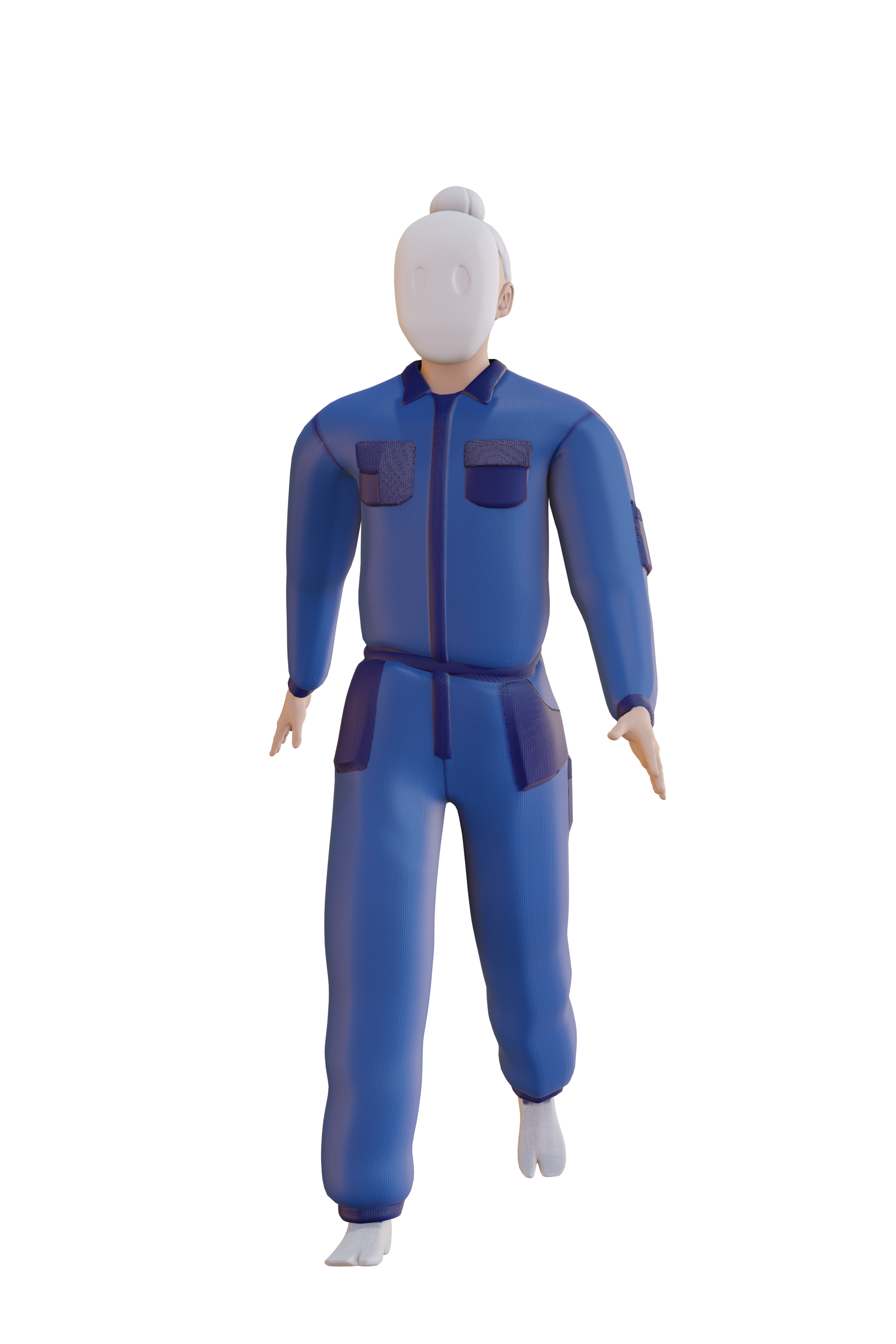
Appearing in: Reflection, 44, Identity.
The Emperor is a character appearing in Reflection, a manuscript based on transmedia storytelling and which is a tribute to a series of artists and artworks, viewed through the lens of the work of Niki de Saint Phalle and her Tarot Garden. Therefore each character exists in several versions: a person or a real artwork to which he or she refers to, a Tarot card, as well as a character existing in 44 (6) and 44 (9), two worlds present in the manuscript.
More information on this art piece here.
Name in 44 (6): The Emperor.
Correspondence in 44 (9): the little white men with funny hats who run 44. (9)
Correspondence in our reality: Bô, a character from Hayao Miyazaki's "Spirited Away". He is a huge, capricious baby who dominates his environment with his caprices. However, he is transformed into a mouse and becomes a burden for the heroine, who carries him everywhere with her, without him having any real function.
Correspondence in the Tarot: the Emperor, who represents control, possession, unnecessary rules, and therefore a certain rigidity. The child keeps repeating "Rules are rules, rules must be followed", no matter how absurd the rules are to get an invitation to the ball. We recognize in this card the authority and the whims of Bo. This character of the emperor and his three represents in a general way, a caricature of power. On the side of Bô, we can find an ironic echo to the monarchy in countries like Belgium, where it exists only because of rules and has no real use. The Emperor is a child, to underline incompetence and stubbornness. The real power is therefore not exercised by these ostensible characters (a king, a huge baby), but by more discreet, anonymous personalities: in this book the little white men, in our current world, personalities of the Silicon Valley, lobbies, etc.
- THE GIANT HEADS
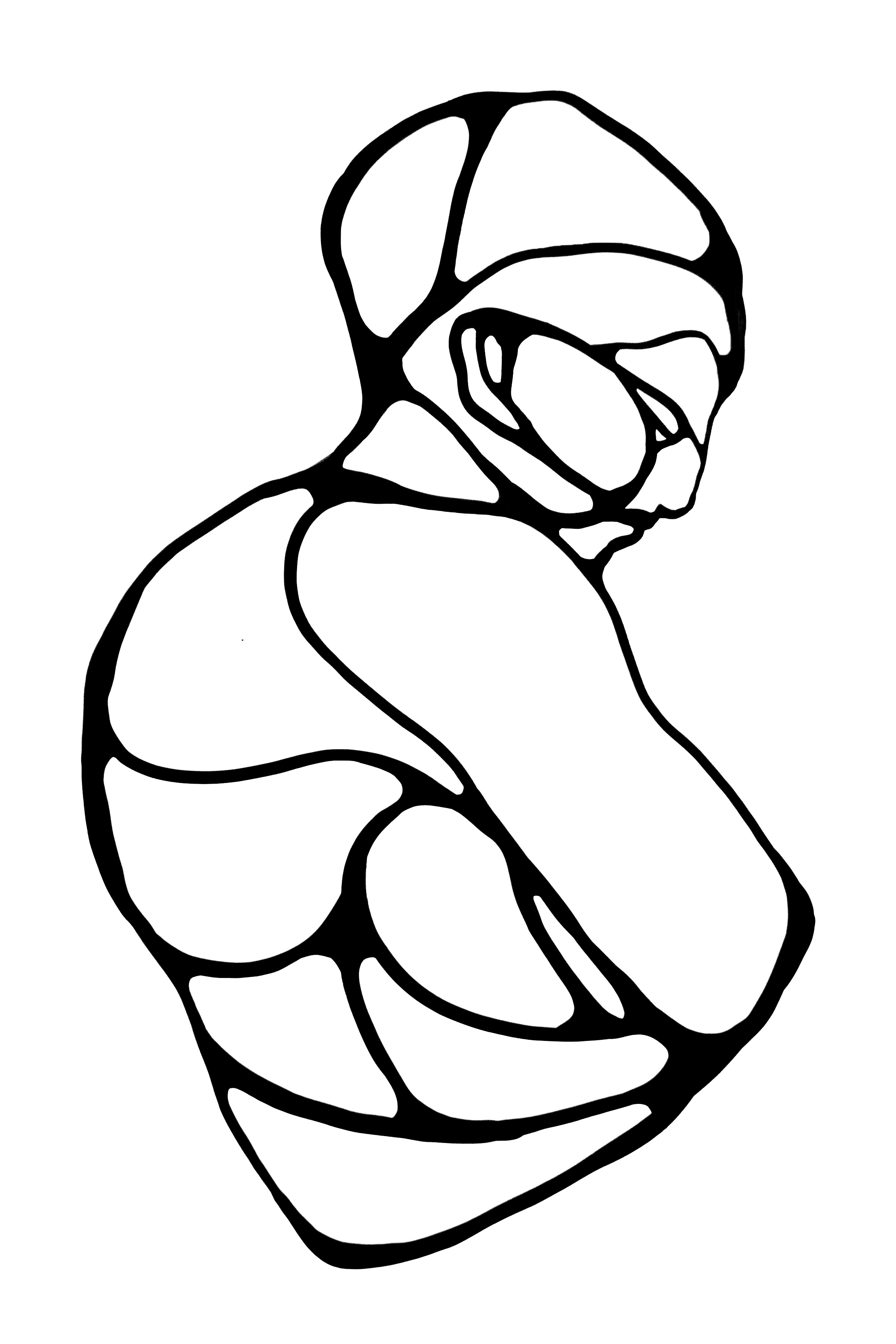
Appearing in: Reflection, Giant Heads.
These heavy, liquid or aerial “giant heads” are personifications of the scents that act as official ID´s in the manuscript of Reflection.
More information on this art piece here.
- THE IDEAS´ SELLER

Appearing in: Reflection, Giant Heads, 44 .
The Ideas´seller is a character appearing in Reflection, a manuscript based on transmedia storytelling and which is a tribute to a series of artists and artworks, viewed through the lens of the work of Niki de Saint Phalle and her Tarot Garden. Therefore each character exists in several versions: a person or a real artwork to which he or she refers to, a Tarot card, as well as a character existing in 44 (6) and 44 (9), two worlds present in the manuscript.
More information on this art piece here.
Name in 44 (6): The Ideas´seller.
Correspondence in 44 (9): the butterfly.
Correspondence in our reality: the tale "The Butterfly Dream" by Chuang Tzu, a 4th-century Chinese thinker. It is a parable that questions reality. In short, a man dreams of being a butterfly. But when he wakes up, he wonders if he dreamed of the insect or if it is the butterfly that is now dreaming of him. The discussion the main character has with the ideas seller when he first goes to his store refers to this:
“- Oh I'm dreaming... I mumbled, exasperated.
-Oh, you think so? asked the ideas’ seller. I stared at him for a moment, confused.
-I'm sorry?
-Perhaps I am dreaming. Or could it be you?”
Correspondence in the Tarot: the High Priestess, who represents mental activity, introspection, intellectuality, which corresponds well to what the fable "The Dream of the Butterfly" induces.
- THE RECEPTIONIST
Appearing in: Reflection.
The Receptionist is a character appearing in Reflection, a manuscript based on transmedia storytelling and which is a tribute to a series of artists and artworks, viewed through the lens of the work of Niki de Saint Phalle and her Tarot Garden. Therefore each character exists in several versions: a person or a real artwork to which he or she refers to, a Tarot card, as well as a character existing in 44 (6) and 44 (9), two worlds present in the manuscript.
More information on this art piece here.
Name in 44 (6): The Receptionist.
Correspondence in 44 (9): the young girl who works in the restaurant, in charge of organizing the reception.
Correspondence in our reality: Judy Chicago's "The Dinner Party," an installation that includes thirty-nine dining tables. Each set on each table represents a historical or mythological woman. The work includes the names of nine hundred and ninety-nine women associated with the thirty-nine guests and is a tribute to women's history. In "Reflection," the girl who works in the restaurant at stop 44 (9) mentions that she is preparing a dinner for thirty-nine guests and that she has nine hundred and ninety-nine invitations. The receptionist and this character both repeatedly use the expression "my little sugar", a hint to their connection.
Correspondence in the Tarot: the Justice, which symbolizes equality. The receptionist constantly refers to justice, whether it is when she sends the main character to deliver a recipe, or when she reprimands the apprentice cook for running out of canned pineapple.
- THE TRUTH DEALER
Appearing in: Truth Dealer.
The Truth Dealer is the cousin of the Ideas Seller. Instead of selling “plain ideas” like his cousin, he sells a wide array of ideas of what Truth is. In other words, his eponymous webshop offers products and services with varying degrees and sources of Truth. In an effort to extend his business, he is opening a pop-up shop where one can order Truth Dealer´s goods and services via tablets and pick up their order at the counter, just like in your favorite fast food venture.
- THE MAIN CHARACTER
Appearing in: Reflection.
The Main Character is a character appearing in Reflection, a manuscript based on transmedia storytelling and which is a tribute to a series of artists and artworks, viewed through the lens of the work of Niki de Saint Phalle and her Tarot Garden. Therefore each character exists in several versions: a person or a real artwork to which he or she refers to, a Tarot card, as well as a character existing in 44 (6) and 44 (9), two worlds present in the manuscript.
More information on this art piece here.
Name in 44 (6): The Main Character.
Correspondence in 44 (9): M.
Correspondence in our reality: the main character represents the "I" from a universal point of view, the reader who is led to reflect on himself through the reading of the book.
Correspondence in the Tarot: the Fool. The Tarot is a metaphor for life, and the character that we follow through his life’s journey is the Fool.
- THE SALESMAN/CAT
Appearing in: Reflection, Self-Portrait (as the Master of the Ruins).
The Salesman/Cat is a character appearing in Reflection, a manuscript based on transmedia storytelling and which is a tribute to a series of artists and artworks, viewed through the lens of the work of Niki de Saint Phalle and her Tarot Garden. Therefore each character exists in several versions: a person or a real artwork to which he or she refers to, a Tarot card, as well as a character existing in 44 (6) and 44 (9), two worlds present in the manuscript.
More information on this art piece here.
Name in 44 (6): The Salesman/Cat.
Correspondence in 44 (9): the Master of the Ruins.
Correspondence in our reality:
Felix Gonzalez-Torres' Untitled (Perfect Lovers), which consists of two perfectly synchronized industrial clocks placed side by side. They symbolize Gonzales-Torres and his companion, in perfect harmony, synchronized. But the nature of these clocks inevitably leads them to get out of sync. The battery of one of them dies before the other. It is a tragic illustration of life, and of the artist's love relationship: his partner, suffering from AIDS, died before him.
In "Reflection", the salesman has a clock, as well as R. If at the beginning they both shift by two hours, they end up desynchronized as the main character notices when he sees the clock in the salesman's window, slowed down by only one hour. Shortly thereafter, R disappears.
Correspondence in the Tarot: the Hermit, who represents secret knowledge and a guide to introspection. It is precisely the salesman, in the form of a cat, who leads the main character to the two ladies who incite him to go to the Personal Reserve and thus pass to the other side of reflection. Introspecting means observing oneself, and this is what the main character will literally do in this second part.
- THE TWO LADIES PLAYING SENET
Appearing in: Reflection.
The Two Ladies playing Senet are characters appearing in Reflection, a manuscript based on transmedia storytelling and which is a tribute to a series of artists and artworks, viewed through the lens of the work of Niki de Saint Phalle and her Tarot Garden. Therefore each character exists in several versions: a person or a real artwork to which he or she refers to, a Tarot card, as well as a character existing in 44 (6) and 44 (9), two worlds present in the manuscript.
More information on this art piece here.
Name in 44 (6): The Two Ladies playing Senet.
Correspondence in 44 (9): the sun and the moon.
Correspondence in our reality: the myth of the senet game between Konshu and Thot in Egyptian mythology. This is the legend that explains the passage from 360 to 365 days in the Egyptian calendar: the sun god, Thoth, played a game of senet against Konshu, the moon god. Thoth won the game. As he had bet to receive 5 days as a winning prize, he added these to the existing 360.
In "Reflection", the two ladies compete in senet, and the winner offers 5 extra hours to the main character in reference to this myth.
Correspondence in the Tarot: the Sun and the Moon, which represent respectively the clarity of mind and the emotional journey. The meeting between the main character and these two ladies takes place at the junction between the first and second part of the book, allowing him to clarify his mind and bring his inner journey to a conclusion.
- TYCHI
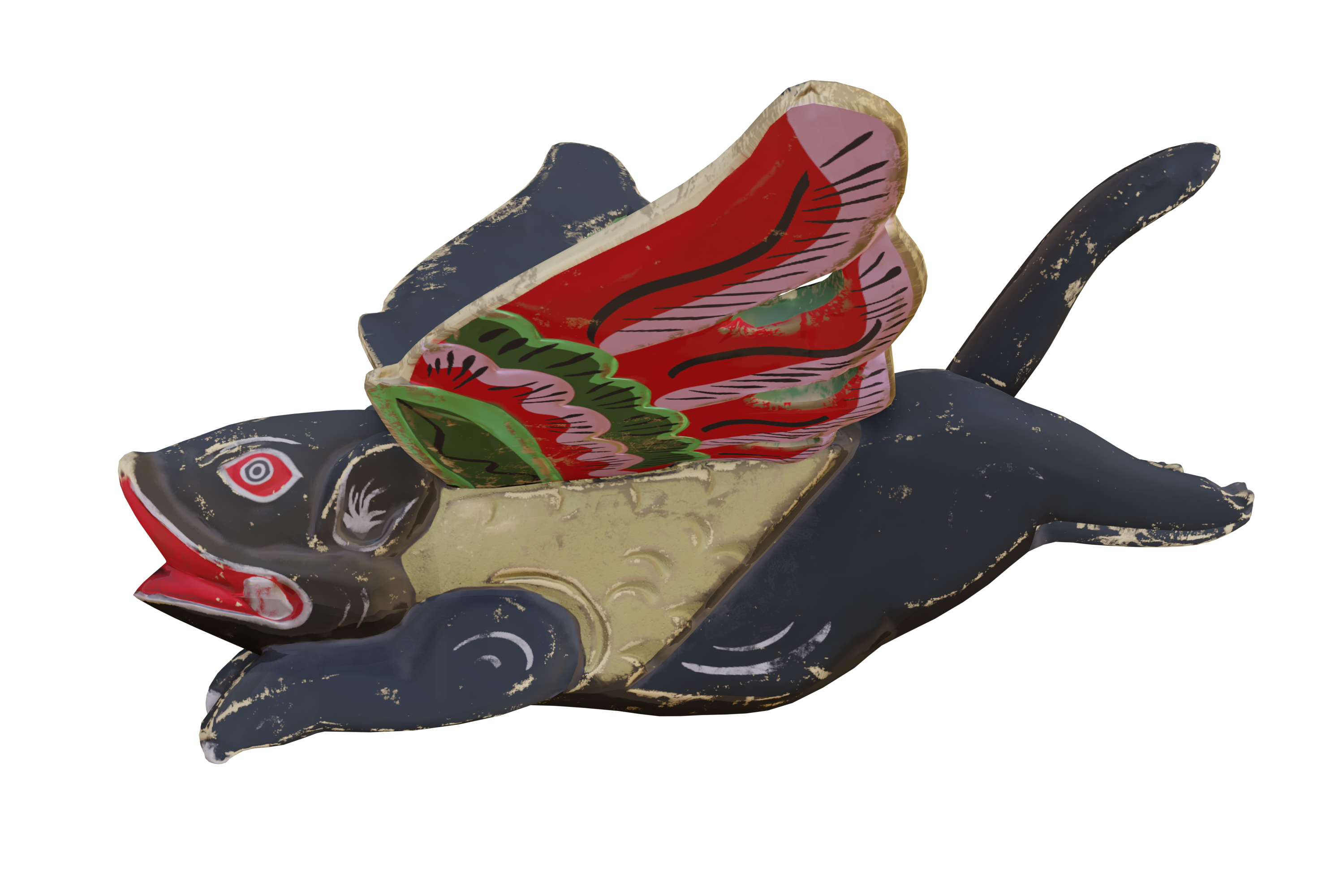
Appearing in: Self-Portrait.
Tychi is originally a flying pig carved out of wood whose first or second life was spent leisurely hanging in a woodworker´s shop in Indonesia, catching once in a while bad spirits.
Tychi is an inhabitant of Self-Portrait. Self-Portrait is an installation centered on memories which contains a digital world in which the residents and passers by’s wealth depends on the amount of attention paid to the memories they hold.
More information on this work here.
Tychi entered Self-Portrait as a 3D scan and is thus, just like Donaldino, a symbol of the digitalisation of memories. Tychi sometimes hangs out with neutral or good spirits, such as the grandparents of Angafama, to keep them company.
- YUE-TU
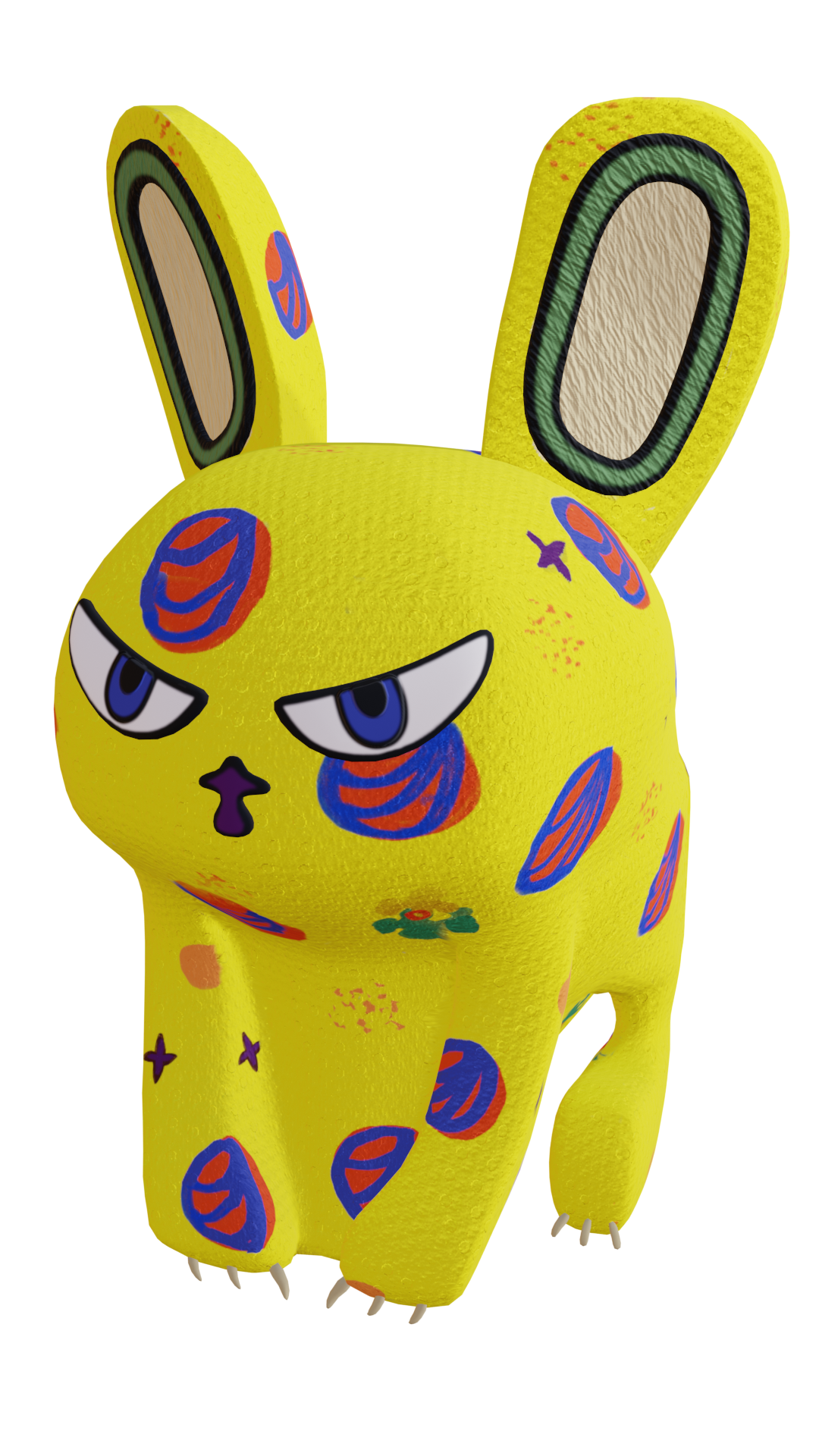
Appearing in: Self-Portrait.
Yue-Tu is a temperamental bunny, who first appeared as a 2D childhood painting blown out in 3D. Yue-Tu is an interpretation of the moon rabbit, who in Chinese and Vietnamese folklore, pounds the elixir of immortality with a mortar and pestle.
Yue-Tu is an inhabitant of Self-Portrait’s digital world. Self-Portrait is an installation centered on memories which contains a digital world in which the residents and passers by’s wealth depends of the amount of attention paid to the memories they hold. More broadly, Self-Portrait is also referring to transhumanist efforts of memory preservation through methods such as cryogenisation or mind uploading, in an attempt to avoid death. Self-Portrait highlights common patterns between the way transhumanists -who are dominant atheists- conceive eternal life through memory preservation and the way Christian, Buddhist religions or Chinese and Greek mythologies connect death, afterlife, rebirth or eternal life and memory.
More information on this work here.
Yue-Tu is the personification of this parallel between the transhumanist quest for immortality and mythological conceptions of the relationship between immortality and memories.